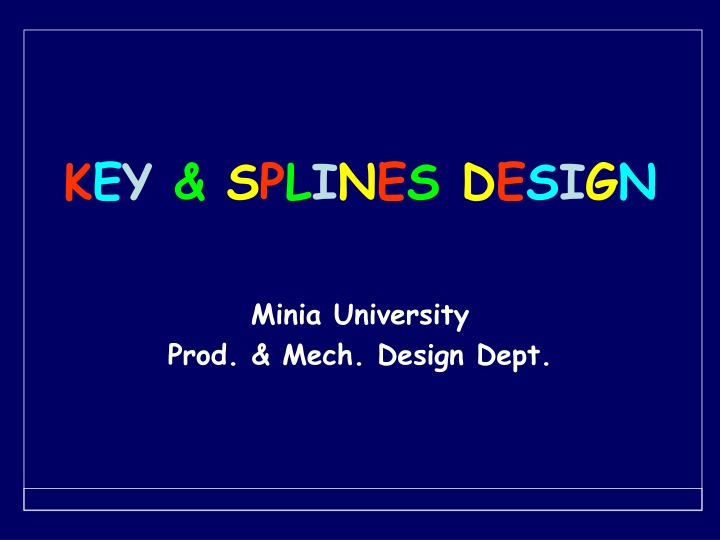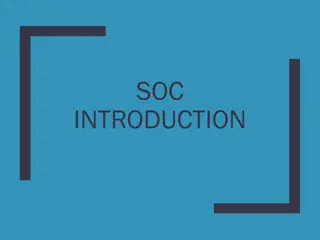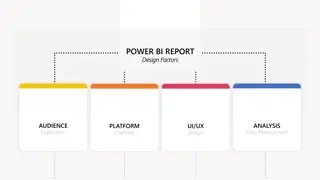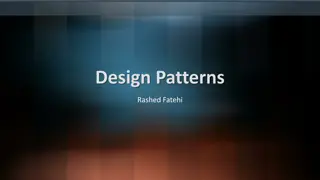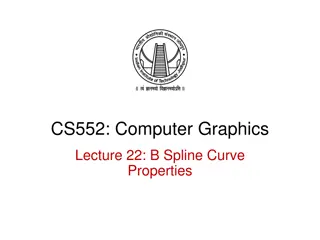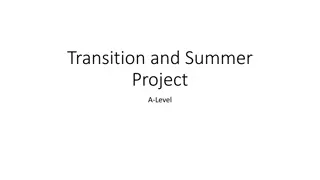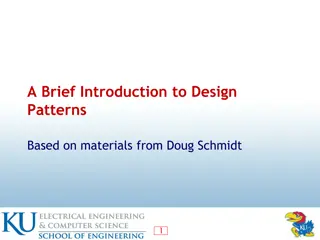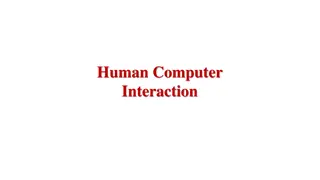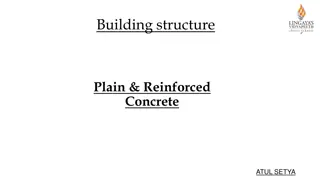Key and Splines Design at Minia University
Key and splines design play a crucial role in connecting mechanical elements like shafts and hubs to transmit power efficiently. This article covers the types of keys, principles of work, and various classifications of keys such as sunk keys, saddle keys, tangent keys, round keys, and splines. It delves into specific types like rectangular sunk keys, square sunk keys, parallel sunk keys, gib-head keys, and feather keys, providing insights into their dimensions, features, and applications. The content is a comprehensive guide to understanding key and splines design, particularly in the context of Minia University's Production and Mechanical Design Department.
Download Presentation

Please find below an Image/Link to download the presentation.
The content on the website is provided AS IS for your information and personal use only. It may not be sold, licensed, or shared on other websites without obtaining consent from the author.If you encounter any issues during the download, it is possible that the publisher has removed the file from their server.
You are allowed to download the files provided on this website for personal or commercial use, subject to the condition that they are used lawfully. All files are the property of their respective owners.
The content on the website is provided AS IS for your information and personal use only. It may not be sold, licensed, or shared on other websites without obtaining consent from the author.
E N D
Presentation Transcript
KEY & SPLINES DESIGN Minia University Prod. & Mech. Design Dept.
1. TYPES OF KEYS - Key is a piece of mild steel inserted between two mechanical elements (usually shaft and hub) to connect them together and transmit power from one of them to the other. - The power should be transmitted without any loss. -It is inserted parallel to the axis of the shaft in a groove or slot which called keyway .
PRINCIPLE OF WORK Key Key W Key Keyway h L Hub Hub-Key-Shaft Connection
- Keys can be classified into the following main groups: - Sunk keys. - Saddle keys. - Tangent keys. - Round keys. - Splines. 2. SUNK KEYS The sunk keys are provided half in the keyway of the shaft and the other half in the keyway of the hub. The sunk keys have the following types:
W 2.1 RECTANGULAR SUNK KEY 1:100 t L 2 d t = = W W = = 3 4 W = Width of key t = Thickness of key. Where: d is the diameter of the shaft. If the sunk key tapered top side has an inclination of 1:100. is tapered, therefore, the
2.2 SQUARE SUNK KEY The square sunk keys is that the width (W) of the square key is equal to its thickness (t). i.e.; W = t main difference between rectangular and 2.3 PARALLEL SUNK KEY The parallel sunk key can be either rectangular or square cross sectional sunk keys with a uniform width and thickness i.e. the parallel sunk key is a taper-less top side sunk key with a square or rectangular cross section. The parallel sunk keys are important for connecting the movable pulley, gear or hubs with there carrying shafts.
2.4 GIB-HEAD KEY It is a rectangular sunk key with a head at one end known as gib-head. This type has the advantage that it is more easily to removal than the other above mentioned types. TAPER 1:100 Shaft 1.75 t t 450 Hub Gib-head sunk key.
TAPER 1:100 Shaft 1.75 t t 450 Hub W The usual proportions of the Gib-head key are: d W = = 4 2 d = = = = t W 3 6
2.5 FEATHER KEY It is a key, which is attached to one member of the pair and allows the other to be movable along it. The key can be screwed to the shaft as in figure. The proportions of the feather key are the same as that of the parallel rectangular gib-head keys. The following table shows the standard dimensions of parallel, tapered and gib-head keys. Movement Direction Hub Screw feather Feather key. or parallel
Table 1: Key dimensions according to IS 2292 and 2293-1963. Shaft diameter up to (mm) Key cross sec. t (mm) W(mm) 2 3 4 5 6 8 10 1 2 14 1 6 1 8 20 22 Shaft diameter up to (mm) Key cross sec. W (mm) 25 28 32 36 40 45 50 56 63 70 80 90 100 t (mm) 14 16 18 20 22 25 28 32 32 36 40 45 50 6 8 2 3 4 5 6 7 8 8 9 85 95 110 130 150 170 200 230 260 290 330 380 440 10 12 17 22 30 38 44 50 58 65 75 10 1 1 12 14
2.6 WOODRUFF KEY -It is a piece from a cylindrical disc having segmental cross section. -It is an easily adjustable key. Woodruff key.
-The woodruff key is capable of tilting in a recess milled out in the shaft by a cutter having the same curvature as the disc form which the key is made (form milling cutter). -This type is usually used in machine tool and automobile constructions.
ADVANTAGES WOODRUFF KEY 1- Easy in assembly and disassembly 1 2 3 4 2- Its extra depth in the shaft prevents any tendency to turn over in its keyway.
3. SADDLE KEYS W d = = = = t 3 12 Saddle key.
4. ROUND AND DOWEL PINS - The round keys and dowel pins are circular elements and fit into holes drilled partly in two contact parts. Dowel pins.
- Tapered pins are held in place by friction between pin and reamed tapered holes. - Round keys are usually considered to be most appropriate for low power drives. Dowel and Taper pins
5. SPLINES -Spline shafts are shafts with integrated number of keys (more than 2 keys), which fit in the keyways, which are broached in the hub. - Usually, the shaft has 4, 6, 10 or 16 splines. b d D D = 1.25 d b = 0.25 D
-Splined shafts are stronger than the shafts with one key. Therefore, the spline shafts are used when the power to be transmitted is large in proportional to the size of the shaft as in automobile transmission transmission. and sliding gear -Also, axial movements of hubs with respect to shaft can be achieved by spline shafts.
IMPORTANT NOTICES 1- Number of keys can be: 1 2/1800 4 or more. 2- Width and height of key are assumed as a function of shaft diameter where the key length is determined from strength equations. 3- Strength of key material should be less than that of shaft and hub materials.
D = 1.25 d b = 0.25 D b b d D d D
